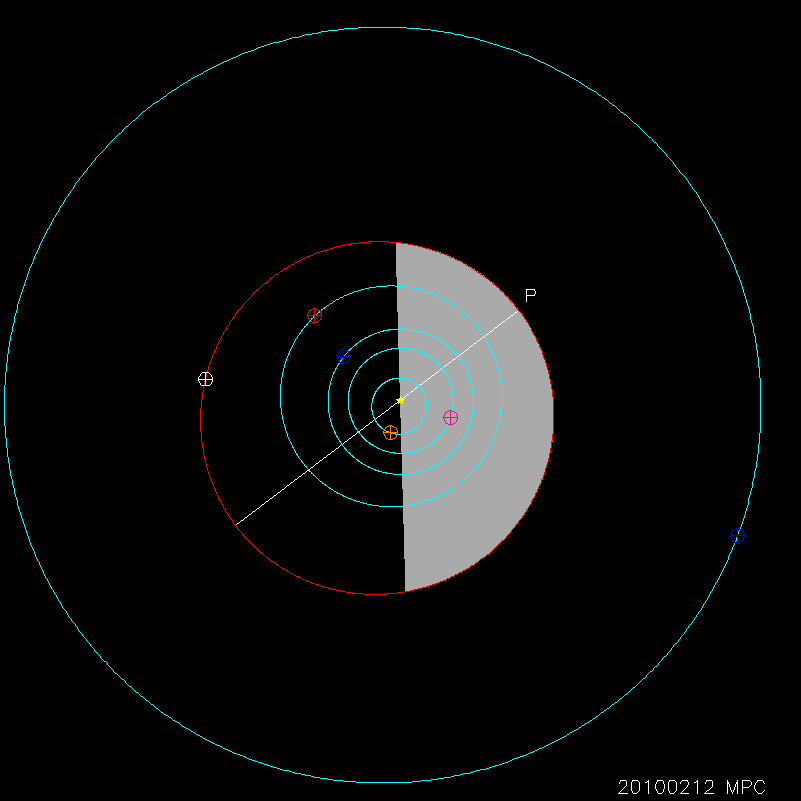(19367) Pink Floyd
Minor planet number 19367 has been named in honor of the English supergroup Pink Floyd.The citation announcing the naming appeared on Minor Planet Circular 49281 (issued on 2003 Aug. 6), from which the following is extracted with permission:
(19367) Pink Floyd = 1997 XW3
Discovered 1997 Dec. 3 by the OCA-DLR Asteroid Survey at Caussols.
An influential English progressive rock group, Pink Floyd wrote
several astronomically themed songs, such as Interstellar Overdrive
and Astronomy Domine. The group's 1973 album
Dark Side of the Moon is one of the classic rock recordings.
Read about how minor planets are named.
About (19367) Pink Floyd
(19367) Pink Floyd is in a 3.83-year elliptical orbit around the sun ranging in distance from 305.9 million km (at perihelion, closest point to the sun) to 425.9 million km (at aphelion, furthest point from the sun).The previous perihelion passage occurred on 2008 Oct. 23.4 UT.
The orbit is inclined by 3.7 degrees to the ecliptic plane (the plane of the earth's orbit about the sun).
There is little information on the physical properties of (19367) Pink Floyd. Even its diameter is uncertain--a range of 3 to 6 km is probable.
You will need a telescope to see this minor planet as its maximum brightness is some 1/15127 of the brightness of the faintest objects that can be seen with the unaided eye.
The diagram below show the orbit of (19367) Pink Floyd in relation to the major planets in the inner solar system.

This view of the inner solar system is seen from the north ecliptic pole. The sun is the yellow star at the center of the image. The blue orbits represent, in increasing distance from the center, the major planets Mercury, Venus, Earth, Mars and Jupiter. The position of each major planet at the date indicated at the bottom of the plot is shown by the large circled cross. The orbit of the minor planet is shown in red, with the location of the minor planet (at the date indicated at the bottom of the plot) shown as a white circled cross. From this vantage point the planets revolve around the sun in a counter clockwise direction. The vernal equinox is off to the right. The portion of the minor planet's orbit that is below the plane of the earth's orbit is shaded grey. The perihelion point of the minor planet's orbit is at the end of the white straight line through the sun indicated by "P".
Also available is information on provisional designations.
Where is (19367) Pink Floyd tonight? Customisable ephemerides are available.
Back to Rock & Roll Minor Planets
